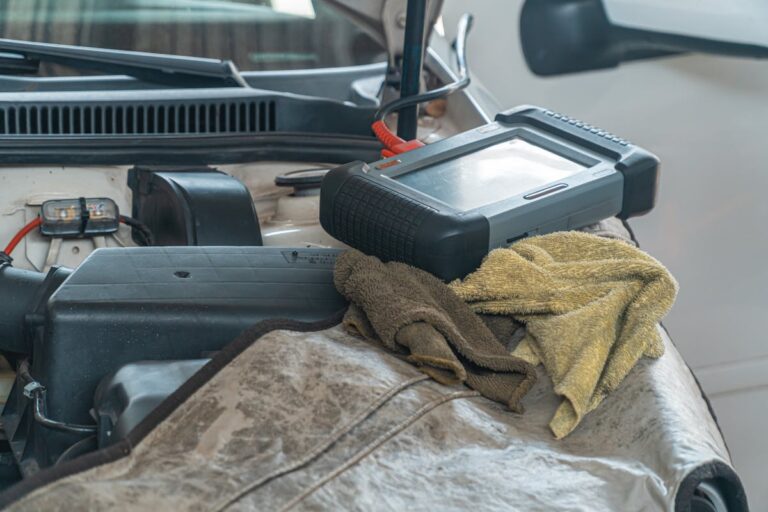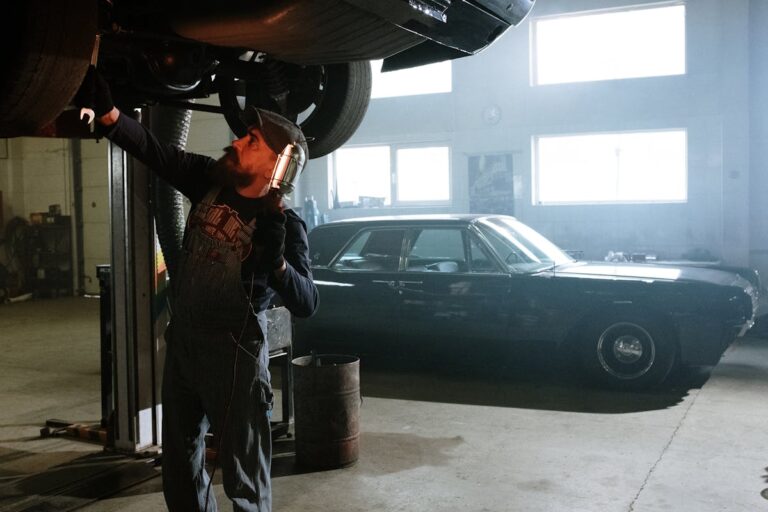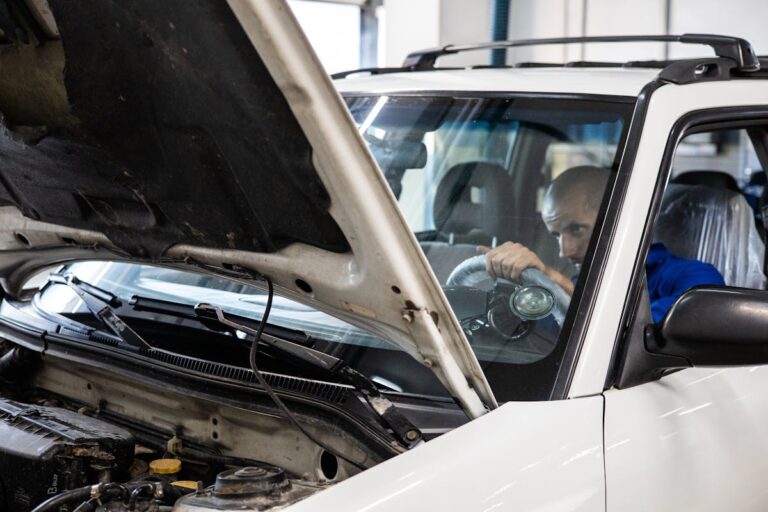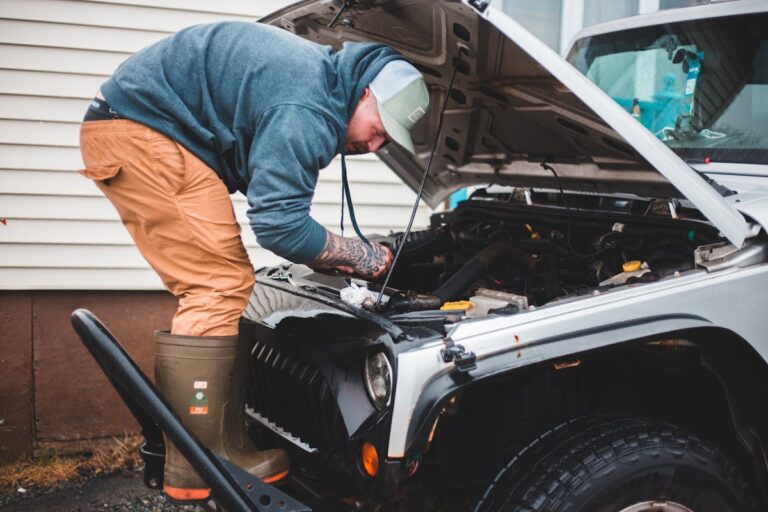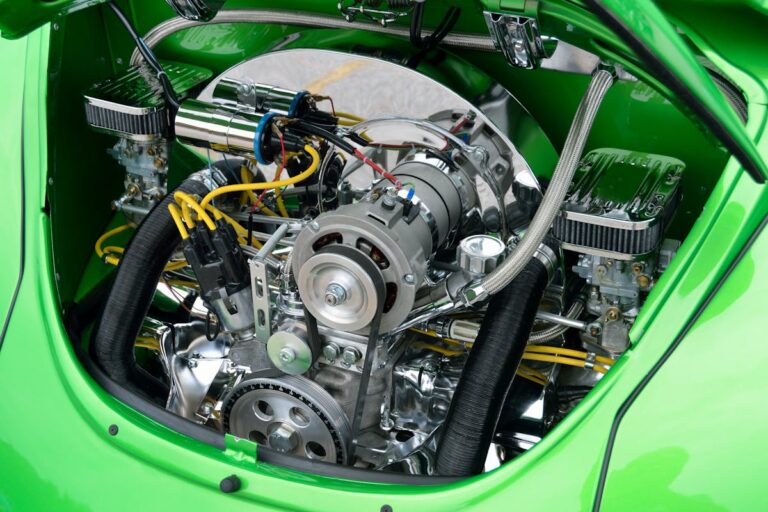Understanding the importance of regular vehicle maintenance is paramount to prolonging the life of your car, enhancing its performance, and ensuring safety on the road. With an array of components requiring periodic check-ups and maintenance, including the engine oil, tires, brake system, battery, and other key fluids, where does one begin? By establishing a systematic maintenance routine, you can greatly reduce unexpected repair costs and extend the lifespan of your vehicle. But how can you effectively manage this process? Let’s explore further.
Regular Oil and Filter Changes
Although it may seem mundane, regular oil and filter changes are integral to the longevity and performance of your car. The oil and filter work together to keep your engine running smoothly by reducing friction and removing harmful particles.
Oil viscosity, which refers to the thickness and flow characteristics of the oil, is a critical aspect to evaluate. It directly affects the efficiency and performance of your engine. Higher viscosity oils, such as 10W-40, are thicker and flow slower, making them ideal for high-temperature operations. Lower viscosity oils, like 5W-30, are thinner and flow faster, which is suitable for cold weather performance.
In addition to oil viscosity, filter types play a significant role in maintaining your engine’s health. There are two main types of filters: primary and secondary. Primary filters are designed to filter out larger particles and are typically replaced during each oil change. Secondary filters, on the other hand, are more efficient and can filter out smaller particles. However, they are less commonly used due to their higher cost.
Importance of Tire Maintenance
The significance of tire maintenance in vehicle upkeep cannot be overstated. A thorough understanding of tire wear patterns can provide essential insights into potential issues with alignment, suspension, and tire pressure. Regular tire check-ups, consequently, not only guarantee the longevity of the tires but also contribute to the overall performance and safety of the vehicle.
Understanding Tire Wear
Proper comprehension of tire wear is an essential aspect of vehicle maintenance. It is a multifaceted subject that requires understanding of several variables, including tire pressure and tread depth.
Tire pressure plays a significant role in tire wear. Inadequate or excessive pressure can lead to uneven tire wear. Under-inflation causes the tire’s outer edges to wear prematurely due to increased contact with the road. Over-inflation, on the other hand, causes the center of the tire to wear faster as it bears most of the vehicle’s weight. As a result, maintaining the correct tire pressure is important to extend the life of your tires and guarantee optimum performance.
Tread depth is another important factor that affects tire wear. The tread provides the necessary grip on the road, especially in challenging weather conditions. As the tread wears down over time, the tire’s ability to grip the road decreases, leading to longer stopping distances and an increased risk of skidding. In most regions, it’s legally required to replace tires once the tread depth reaches a specific limit, typically 1.6mm.
Understanding tire wear enables you to identify the signs of uneven or premature wear, thereby preventing potential vehicular issues and maintaining safety.
Regular Tire Check-Ups
Given the vital role tires play in the overall performance and safety of your vehicle, regular tire check-ups are of utmost significance. These check-ups should be thorough, covering aspects such as tire pressure, tread depth, tire rotation, alignment, and visual inspection for any signs of damage.
- Tire Pressure: Correct tire pressure guarantees maximum fuel efficiency and handling. It also reduces the risk of tire wear and blowouts.
- Tread Depth: Monitoring tread depth is essential. A worn-out tread compromises your vehicle’s grip, especially on wet surfaces, leading to longer braking distances and increased risk of aquaplaning.
- Tire Rotation: Regular tire rotation guarantees even tire wear, prolonging the life of your tires and improving overall vehicle performance.
- Alignment: Improper alignment can cause uneven tire wear and negatively affect your vehicle’s handling and fuel economy.
- Visual Inspection: Regularly inspect your tires for any visible signs of damage like cuts, punctures, or bulges.
Brake System Checkups
A significant aspect of car maintenance is the regular inspection of the brake system, ensuring its ideal performance and longevity. Understanding the maintenance procedures of this system not only enhances safety but also allows for early detection of potential issues. In the subsequent discussion, we will highlight the importance of these checkups and explain the technicalities involved in the process.
Regular Brake Inspection Importance
Without the regular inspection of your vehicle’s brake system, you risk encountering dangerous situations on the road. A well-maintained brake system is essential to overall vehicle safety and performance. It is vital to understand the importance of regular brake inspections to maintain peak brake performance and to prevent brake noise, which can signify more serious issues.
The benefits of regular brake inspections include:
- Detecting early signs of wear and tear: Regular checks can identify issues before they escalate, saving costly repairs and guaranteeing safety.
- Maintaining brake performance: Regular maintenance guarantees that your brakes work efficiently, contributing to overall vehicle performance.
- Mitigating brake noise: Unusual noises may indicate brake issues that need immediate attention. Regular inspections can help identify and resolve these problems.
- Avoiding unexpected breakdowns: Regular brake inspections can prevent sudden brake failures, guaranteeing your safety on the road.
- Increasing vehicle lifespan: A well-maintained brake system can extend the life of your vehicle, providing you with the assurance of longevity.
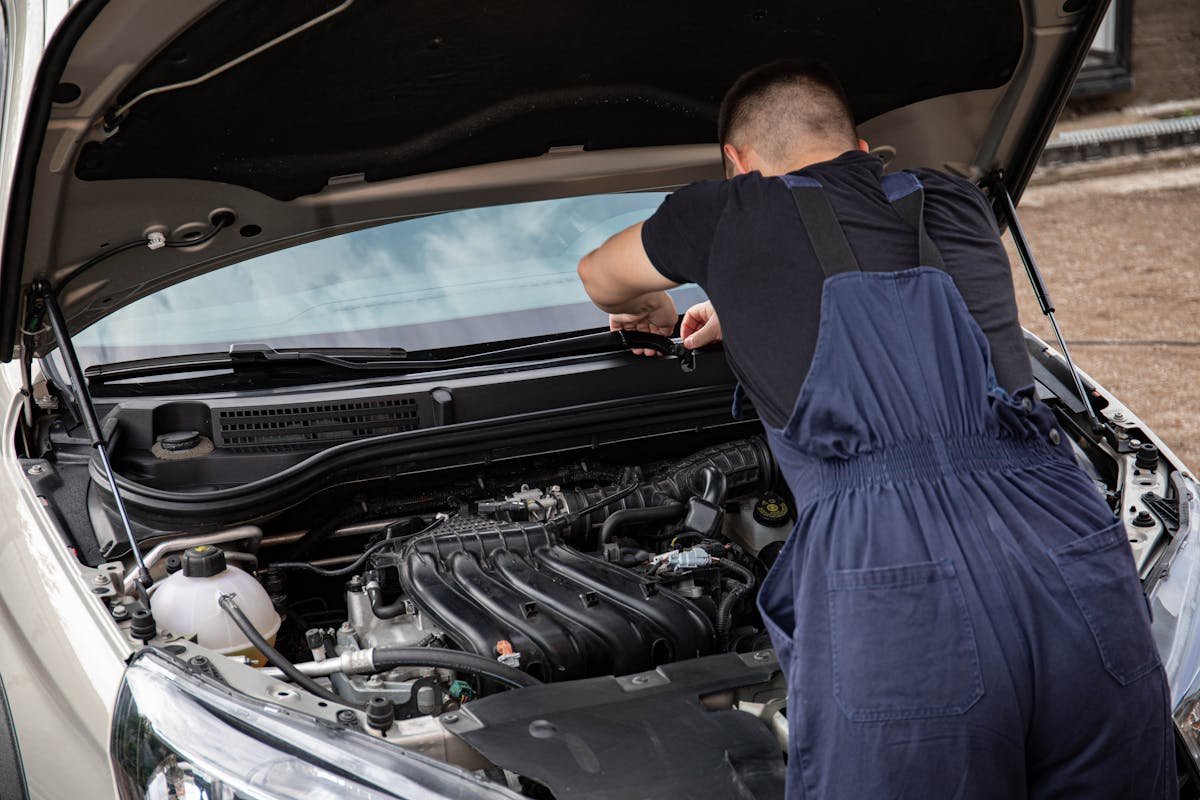
Understanding Brake Maintenance Procedures
In the domain of vehicle maintenance, understanding brake maintenance procedures, specifically brake system checkups, is of paramount importance. This process involves a detailed assessment of the various brake types, including disc brakes and drum brakes, to guarantee proper functionality and prolong vehicle lifespan.
Brake noise, a common complaint among drivers, is often a signal of underlying complications that should be addressed promptly. A high-pitched squeal may indicate worn-out brake pads, while a grinding sound could signify direct contact between the disc and caliper, a condition that requires immediate attention to prevent more severe damage.
During a brake system checkup, the brake fluid is also examined for contamination. Over time, brake fluid may absorb moisture from the atmosphere, which may lead to corrosion or degradation of brake parts. Hence, periodic flushing and replacement of brake fluid are essential.
Moreover, the brake lines, hoses, and fittings are inspected for leaks or cracks which could result in a loss of hydraulic pressure, impairing brake performance.
Battery Health Monitoring
Monitoring the health of your car’s battery plays an essential role in guaranteeing the longevity and performance of your vehicle. Regular battery testing is a significant aspect of this process. It can help in early detection of potential issues, thereby preventing battery failures that can lead to unwelcome interruptions in your vehicle’s operation.
Understanding the intricacies of your vehicle’s charging systems also contributes to effective battery health monitoring. A well-maintained charging system guarantees that your battery is always adequately powered and ready for use.
The following are some important steps to bear in mind for battery health monitoring:
- Regularly perform battery testing to check its state of charge and ability to hold a charge.
- Inspect the charging systems to verify they are functioning efficiently.
- Clean the battery terminals to prevent corrosion, which can impede the flow of electricity.
- Check for any signs of battery leaks or swelling, which could indicate a failing battery.
- Get professional help for battery maintenance tasks that are beyond your skill set.
Adopting these measures will guarantee that your battery remains healthy and your car continues to provide you with reliable service.
Routine Fluid Level Inspections
Moving from battery health, another important aspect of car maintenance is the routine inspection of fluid levels. These inspections are essential to the overall performance, safety, and longevity of your vehicle.
There are five primary fluid types that need to be monitored regularly. These include engine oil, coolant, brake fluid, power steering fluid, and transmission fluid. Each of these fluids plays a significant role in the operational functionality of your vehicle. Engine oil, for instance, lubricates the moving components within your engine to prevent damage caused by friction. Coolant, on the other hand, helps control engine temperatures, preventing overheating.
The inspection frequency of these fluid levels can vary depending on the vehicle’s make, model, age, and driving conditions. However, as a general rule, engine oil and coolant levels should be checked at least once a month. Brake fluid, power steering fluid, and transmission fluid should be inspected every three to six months.
Routine fluid level inspections can identify potential issues before they become major problems, saving you time, money, and unnecessary stress. By integrating these inspections into your regular maintenance routine, you can keep your car running smoothly for longer.
Keeping the Car Clean
Beyond the engine and internal components, the cleanliness of your car’s exterior and interior plays a significant role in its maintenance. Dirt, grime, and contaminants can cause premature wear and tear on both the outside and inside of your vehicle.
To maintain the cleanliness of your car, a thorough approach is needed. This approach includes:
- Regular car washing: This helps to remove dirt and grime from the exterior of your car. It is also an opportunity to inspect the car for any damage or issues.
- Exterior waxing: Waxing your car helps protect the paint from UV rays and other environmental factors. It also gives a shiny, polished look to your car.
- Interior detailing: Cleaning the car’s interior is equally important. Proper interior detailing involves cleaning the seats, dashboard, and all other interior surfaces to keep them in good condition.
- Vacuuming: Regularly vacuuming the interior of your car helps to remove dirt and debris, preventing the accumulation of grime.
- Window cleaning: Clean windows provide clear visibility, which is essential for safe driving.
Scheduled Professional Servicing
Despite the importance of routine personal maintenance, regular professional servicing of your car is an essential aspect of thorough car care. Scheduled maintenance involves carefully planned, regular check-ups and repairs carried out by trained technicians. This guarantees that your vehicle remains in peak condition, thereby extending its lifespan and maintaining its efficiency.
Scheduled maintenance typically involves an array of procedures such as engine oil and filter changes, tire rotation and balance, brake inspection, and fluid checks. These detailed professional inspections help identify potential issues that may not be evident to the untrained eye. By detecting and rectifying such problems early, you prevent more major, costly repairs in the future.
Moreover, scheduled maintenance greatly enhances your car’s safety. Extensive professional inspections confirm that vital components like the braking system, steering, and suspension are functioning correctly, thereby reducing the probability of accidents.
Lastly, regular professional servicing improves your vehicle’s resale value. A history of meticulous maintenance indicates to potential buyers that the car has been well cared for, thereby increasing its appeal and market value.
Frequently Asked Questions
How Often Should I Replace the Timing Belt on My Car?
The replacement intervals for a timing belt typically range between 60,000 to 100,000 miles. However, it’s essential to consult your vehicle’s manual for specific recommendations, as this can vary based on the make and model.
What Are the Signs of a Failing Car Alternator?
Signs of a failing car alternator, also known as alternator symptoms, typically include electrical issues like dimming lights, battery drain, difficulty starting the car, and unusual noises from the alternator area.
How Does the Air Conditioning System Impact the Performance of My Car?
The air conditioning system greatly impacts your car’s performance. It affects the engine’s load, fuel efficiency, and overall air conditioning efficiency. Additionally, it can influence cabin air quality, essential for driver and passenger comfort and health.
What Are Some Tips to Improve My Cars Fuel Efficiency?
Improving fuel efficiency involves using fuel additives to enhance combustion, and maintaining ideal tire pressure to reduce resistance, consequently ensuring smooth and energy-efficient vehicle operation. Regular checks and adjustments can lead to significant improvements.
Should I Be Concerned About the Rust on My Cars Body?
Yes, rust on your car’s body should be a concern as it compromises structural integrity. Regular body maintenance and rust prevention techniques can prolong your vehicle’s lifespan and maintain its aesthetic appeal.

